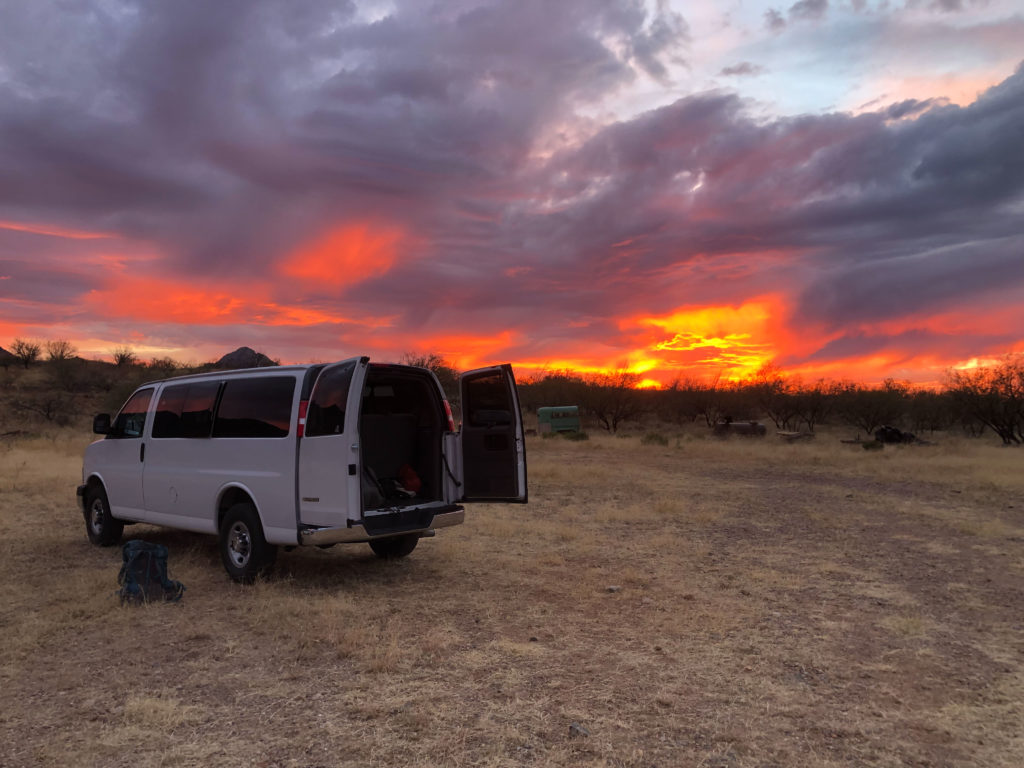
Written by Dexter Kopas, Wild Stew Field Crew Assistant Leader
This last week, the Wild Stew Field Crew returned to Madera Canyon in the Santa Rita Mountains on the Coronado National Forest. This time, we were working on the popular Old Baldy Trail #372, one of the most traveled trails in Southern Arizona. Starting at 5,400’, the former water line maintenance trail shoots steeply up a ridge to Josephine Saddle before exiting the forest and snaking up to the top of Mt. Wrightson (9,543’). Owing to steepness, soil and bedrock conditions, and the frequency of use—regularly hundreds of hikers a day on the weekends—the lower section of Old Baldy has become highly rutted out and widened. That was the focus of our time working there.
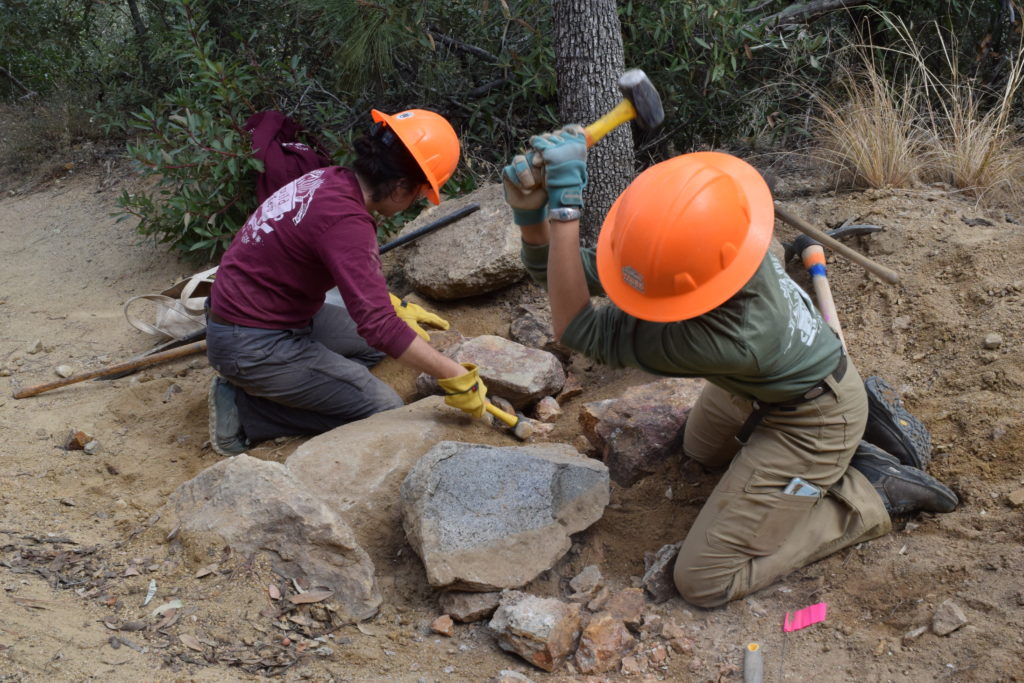
Lexi & Lauren doing rock check steps. Photo by Dexter Kopas. 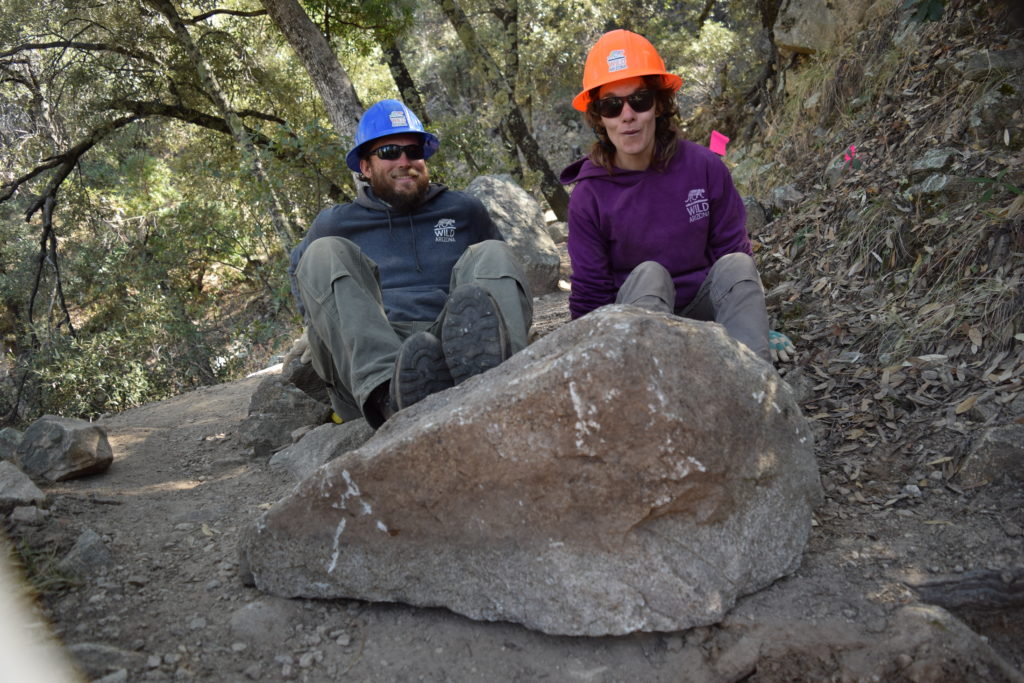
Jonathan and Elly rolling a rock for a check step. Photo by Dexter Kopas.
The hitch started with Wild Arizona’s deputy director and stewardship director Brian Stultz and Outslope Trail Solution’s owner and founder Eric Ruljancich hiking out with the crew to discuss how best to approach the complicated issues facing the trail. We are very thankful for the guidance from such experienced Arizona trailwork experts. Leaving the brushing tools of loppers and saws at home, we set to work on our project of tread stabilization.
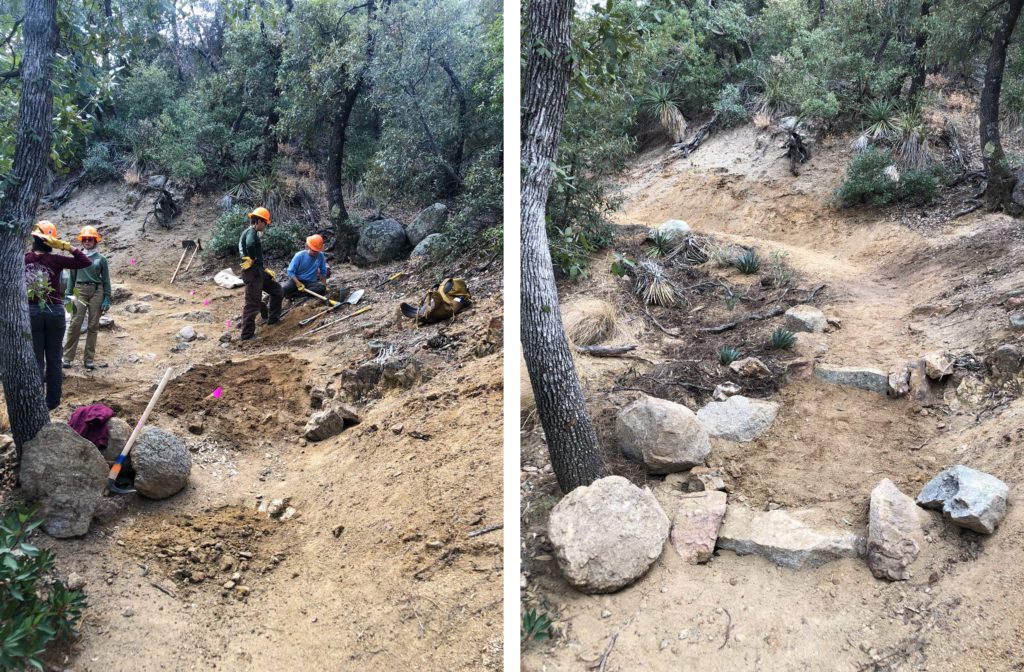
We had the pleasure of engaging in a wide variety of trail activities this time around. Thirty-two check steps were built to retain soil and slow down surface water runoff, often with retaining walls to hold up the trail and help define the walking surface, across seven eroded and excessively wide sections which were also covered using brush, rocks, leaves and transplanted vegetation to renaturalize the areas and prevent people from walking off trail. The crew built twenty-four new drain dips that direct water off the trail and outsloped the tread. Additionally, we found nine T-posts and one 6-foot section of repurposed water pipe that had been used previously to create trail structures. Since they are not made with natural materials, we removed these whenever possible and replaced them with rocks when needed. All in all, it was a lot of time and effort spent in short sections of trail doing creative and constructive work.
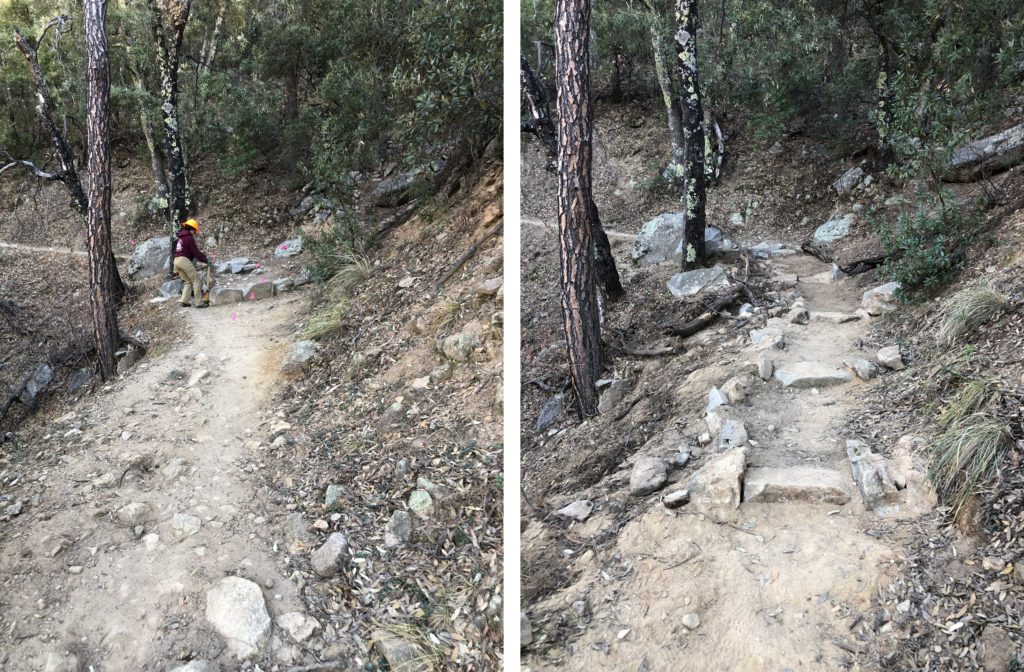
The crew had many opportunities to interact with the public. It is always encouraging to be able to hear and see the appreciation hikers have for the work we do. It’s an added bonus when these hikers stop by with friendly dogs to pet. Some other locals we met were Hutton’s vireos, bridled titmice, Arizona woodpeckers, Mexican jays, deer, and many more unidentifiable birds and insects we enjoyed in blissful ignorance.
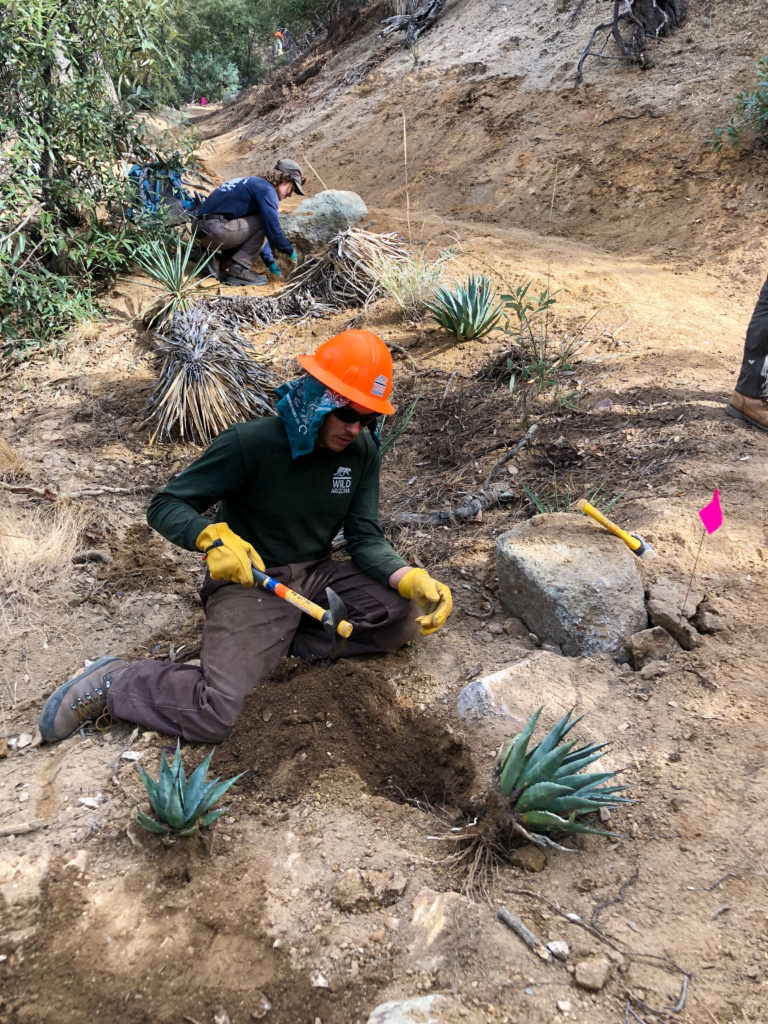
Dexter transplanting agave plants in a restoration area. Photo by Jonathan Patt. 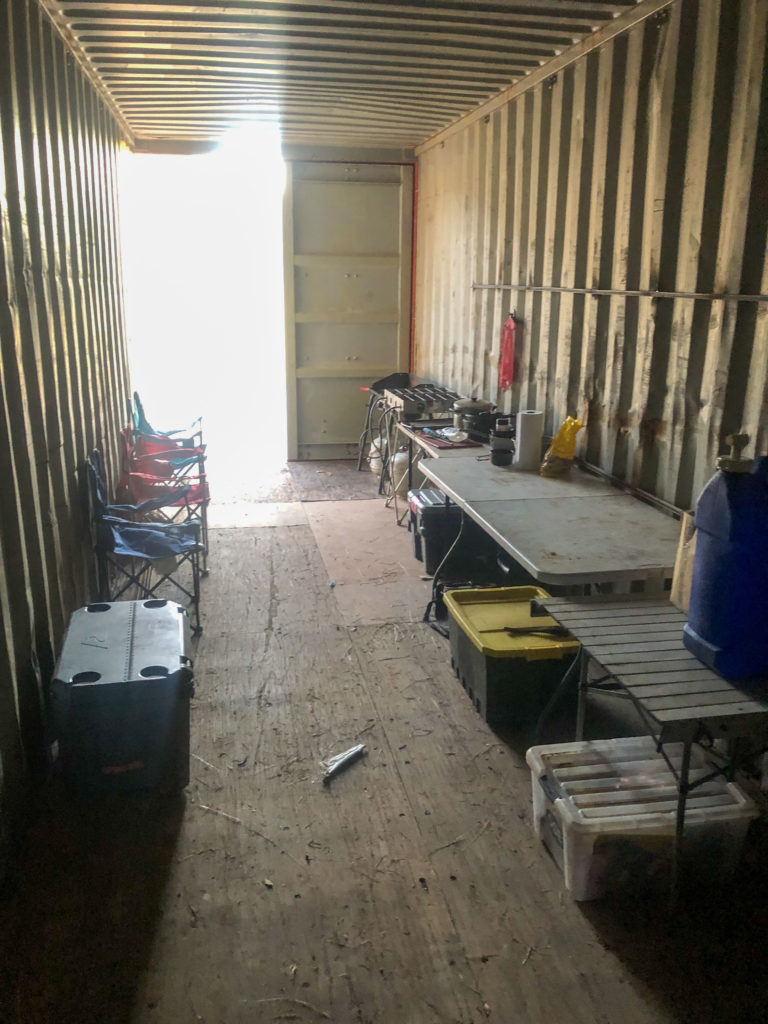
Kitchen setup in a shipping container. Photo by Jonathan Patt.
Back at camp, Wild Stew had the pleasure of cooking up wild stews and spending our evenings escaping the high winds in a shipping container that made a surprisingly comfortable home. When the weather was calm, we watched gorgeous sunsets and gazed upon the twinkling lights of Tucson, Green Valley, and Sahuarita around a warm campfire. Meal highlights included dutch oven enchilada casserole, crunchwrap supremes, and many-a fried potato.
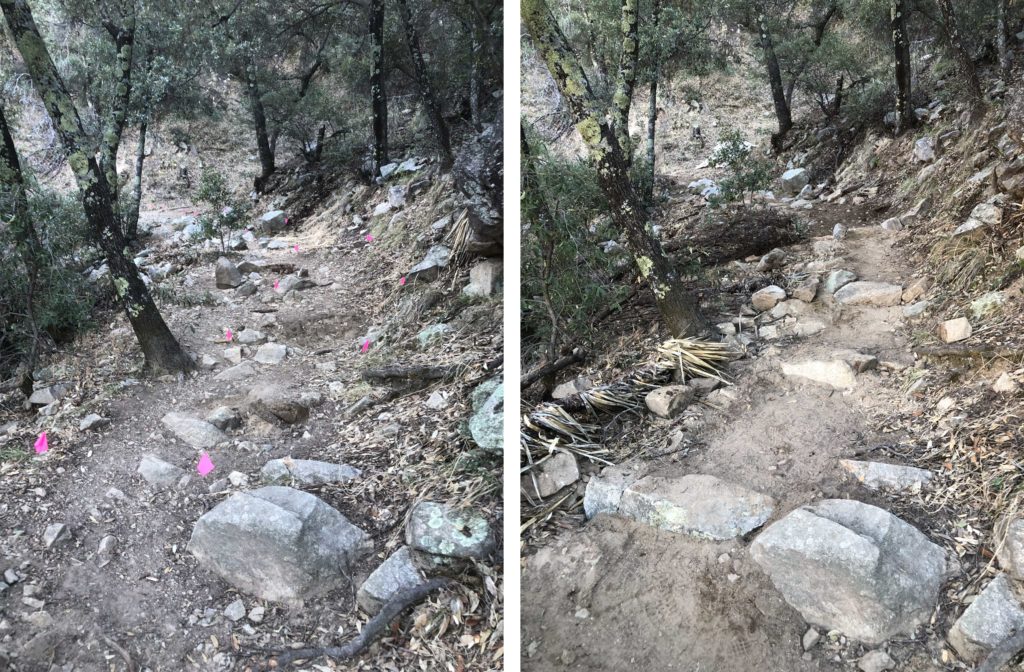
Next hitch, the Wild Stew Field Crew will be split up, with half of us returning to Old Baldy for what will be the second of four total hitches spent there. The others will work on invasive plant removal in the Superstition Mountains.








